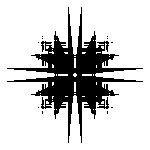Kratom, a plant derivative from Southeast Asia, can be an effective component of a self-care routine for muscle relaxation. Its interaction with opioid receptors may provide relief from muscular tension and promote calmness. Indica strains are particularly noted for their soothing effects, while Maeng Da Kratom is highlighted for its potent muscle-relaxing properties suitable for both chronic and acute tension. A balanced self-care routine should include Kratom use alongside physical activities like yoga or stretching, meditation, proper hydration, and a nutritious diet to maximize its benefits. It's important to start with a low dose of Kratom and consult healthcare providers before use, due to its varying effects depending on the dosage and strain. This holistic approach ensures that Kratom is just one aspect of a comprehensive strategy aimed at overall wellness, integrating various practices for sustainable muscle relaxation and a healthy lifestyle. Always source Kratom from reputable suppliers to ensure safety and purity.
Embarking on a journey towards wellness often includes establishing a self-care routine tailored to your unique needs. Among the practices that can contribute significantly to this daily regimen is the thoughtful incorporation of kratom for its proven muscle relaxation properties. This article delves into the art of crafting a personalized self-care routine, emphasizing how kratom can play a pivotal role in alleviating muscle tension and promoting overall wellness. We will explore the nuances of kratom’s role within self-care practices and provide insights on enhancing your relaxation experience through targeted exercises, ensuring your wellness journey is both effective and enriching.
- Crafting Your Daily Self-Care Routine: Integrating Kratom for Muscle Relaxation and Wellness
- Understanding Kratom's Role in Self-Care and Muscle Tension Ease
- Enhancing Your Self-Care Regimen with Targeted Exercises and Kratom Use for Maximum Muscle Relaxation Benefits
Crafting Your Daily Self-Care Routine: Integrating Kratom for Muscle Relaxation and Wellness

Crafting a daily self-care routine is an empowering step towards maintaining overall wellness, particularly when it includes natural solutions like Kratom for muscle relaxation. Kratom, derived from the leaves of the Mitragyna speciosa tree, has been traditionally used in Southeast Asia for its potential health benefits. Incorporating Kratom into your self-care regimen can offer a dual advantage: it may provide relief from muscular tension and support a state of calm and balance. For those who experience muscle tightness or discomfort, certain strains of Kratom, such as the Indica variety, are known for their soothing properties. To integrate Kratom into your routine, consider dosing guidelines and effects carefully, as the substance is available in various forms, including capsules, powders, and teas. It’s essential to find a reputable source for Kratom to ensure purity and safety.
A well-rounded self-care routine that includes Kratom for muscle relaxation should also encompass other holistic practices. This might involve a combination of gentle stretching or yoga, meditation, adequate hydration, and nutritious meals to complement the muscle-relaxing effects of Kratom. The goal is to create a harmonious balance between physical activity and relaxation, promoting both short-term relief from muscular stress and long-term wellness. Remember to tailor your routine to your individual needs, as self-care is deeply personal. Regularly reassess and adjust your practices to ensure they align with your evolving wellness goals and lifestyle.
Understanding Kratom's Role in Self-Care and Muscle Tension Ease

Incorporating Kratom into self-care routines can offer significant benefits for individuals seeking relief from muscle tension. Kratom, a plant from Southeast Asia with leaves that contain compounds which can interact with the body’s opioid receptors, has been traditionally used to alleviate pain and induce relaxation. When it comes to muscle relaxation, certain strains of Kratom are known for their soothing properties. For instance, Maeng Da Kratom is often favored for its potent effects that can help ease chronic or acute muscle tightness. It’s important to approach the use of Kratom with caution, as it can have varying effects depending on the dose and strain. Users should start with a low dose to gauge their body’s response and consult with healthcare professionals before integrating it into their self-care regimen.
Engaging in consistent self-care practices that include Kratom for muscle relaxation can contribute to an overall improved sense of wellbeing. Beyond physical benefits, self-care encompasses mental and emotional health as well. When muscle tension is eased through the use of Kratom, individuals may find it easier to engage in mindfulness exercises or meditative practices that further support a balanced state of being. It’s crucial to maintain a holistic perspective when considering Kratom’s role; it should be one component within a comprehensive self-care routine that also includes nutrition, exercise, and mental health activities. By doing so, individuals can create a sustainable approach to self-care that promotes not only physical comfort but also supports a healthy lifestyle.
Enhancing Your Self-Care Regimen with Targeted Exercises and Kratom Use for Maximum Muscle Relaxation Benefits

Integrating targeted exercises with kratom use can significantly enhance your self-care regimen for optimal muscle relaxation benefits. Targeted exercises, such as yoga, Pilates, or stretching, are designed to engage specific muscle groups, promoting flexibility and reducing tension. These practices not only improve physical well-being but also contribute to mental clarity and emotional balance, which are foundational aspects of self-care. When combined with kratom, known for its potential muscle-relaxing properties, the result is a synergistic effect that can lead to greater relaxation and stress relief. Kratom interacts with the body’s opioid receptors, providing pain relief and calming effects that complement the physical and mental benefits of exercise. It’s important to approach kratom use responsibly, adhering to dosage guidelines and consulting with a healthcare provider to ensure safety and efficacy in your self-care routine. By tailoring your exercise regimen to your specific needs and incorporating kratom judiciously, you can create a personalized self-care plan that addresses both physical and mental wellness for maximum muscle relaxation benefits.
Incorporating Kratom into a daily self-care routine can significantly contribute to muscle relaxation and overall wellness, as discussed. By understanding its role and integrating it with targeted exercises, individuals can maximize the benefits for muscle tension ease. A consistent self-care practice tailored to personal needs is key to maintaining health and vitality. Embracing Kratom for its muscle relaxation properties, alongside a balanced approach to exercise and rest, provides a holistic framework for supporting well-being. As you continue to explore and refine your self-care strategies, remember the importance of a mindful balance that nurtures both body and mind.






